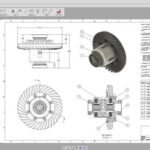
While not everyone will have pondered the subject while staring out of the window during a flight, the question as to why aeroplane windows have rounded edges, unlike the hard corner in your home is interesting.

Over the years, aerospace engineering has made huge leaps in aeroplane technology, meaning planes can carry more passengers and go faster. The planes have also changed shape to increase safety – including the windows. As commercial air travel took off in the mid-20th century, airline companies began to fly at higher altitudes to save money—the air density is lower up there, creating less drag for airplanes. However, higher altitudes came with problems, like the fact human beings can’t really survive at 30,000 feet. To make that possible, the cabin was changed to a cylindrical shape to support the internal pressure. But at first, plane builders left in the standard square windows and this expansion meant catastrophe.

The de Havilland Comet came into fashion in the 1950s. With a pressurised cabin, it was able to go higher and faster than other aircraft. However, the plane had square windows and in 1953 three planes fell apart in the air, killing 43 people in total. The reason for the crashes? The windows. Where there’s a corner, there’s a weak spot. Windows, having four corners, have four potential weak spots, making them likely to crash under stress – such as air pressure. By curving the window, the stress that would eventually crack the window corner is distributed and the likelihood of it breaking is reduced. Circular shapes are also stronger and resist deformation, and can thus survive the extreme differences in pressure between the inside and outside of the aircraft.

Fortunately, designers figured out the design flaw pretty quick. Now we have nice, rounded airplane windows that can withstand the pressure of cruising altitude. Gives being able to gaze out of your window to the world from 35,000 feet a whole new outlook, doesn’t it?


